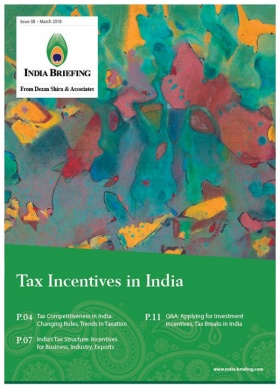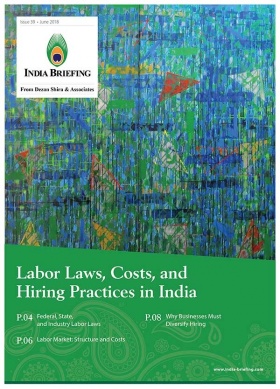Filing Income Tax Returns in India
March 31, 2019, is the final deadline for individuals and businesses to file belated income tax returns (ITR) for financial year (FY) 2017-18. The deadline is also applicable for all those who want to revise their ITR for FY 2017-18.
An Income Tax Return (ITR) is a declaration that you have an income for which you have paid tax.
Filing of ITR is a mandatory obligation where you detail your income from salary and other sources, allowances and reliefs claimed, and investments made through the financial year (FY).
While the official due date for filing ITR is July 31 of the assessment year (AY) – which is the year following the FY during which the income was earned, the income tax department keeps the ITR window open until the end of AY (March 31), for you to file the return belatedly.
(For AY 2018-19, the government had extended the last date for filing ITR to August 31, 2018)It is important to note that filing belated return means you will have to pay a late penalty of up to INR 10,000 (US$145), and will not be eligible to avail certain tax benefits.
How to file belated ITR
The process of filing a belated ITR is the same as filing a return before the due date. That is, assessees who earn a taxable income must declare their total income earned by filing an income tax return form.
All income tax returns must be filed electronically. ‘Super senior’ citizens (above 80 years of age) or an individual whose income is less than INR 500,000 (US$7,258) and who has not claimed any refund in his/her return can file paper returns.
ITR filing for FY 2017-18: Notable changes and provisions
Much of the tax slab rates remain the same for FY 2017-18 as they were for FY 2016-17. However, there are some important changes and provisions that the taxpayer must pay attention to:
- Taxable income between Rs 250,000 (US$3,636) – Rs 500,000 (US$7,271) will be charged at five percent (as opposed to 10 percent for FY 2016-17);
- Individuals with taxable income up to Rs 500,000 (US$7,271) were previously entitled to tax relief in FY 2016-17; this limit has been reduced to Rs 350,000 (US$5,090). Also, the entitled tax rebate is now Rs 2,500 (US$36) brought down from Rs 5,000 (US$72) in the previous filing year;
- FY 2016-17 ITR form required taxpayers to detail only the total taxable amount. However, they now require a detailed breakdown of income from salary, house property, and savings;
- Income from all bank accounts must be detailed in the form. Only savings account interest – to the extent of Rs 10,000 – is exempt from tax under Section 80TTA of the Income-tax Act, 1961;
- This year, NRI taxpayers can also provide details of foreign bank accounts to receive tax rebate where applicable;
- Most importantly, all income tax filings must be e-verified or a printed and signed ITR 5 dispatched to the CPC in Bengaluru within 120 days of filing the return online. Your return filing is ‘invalid’ without this, and can attract a late filing penalty; and,
- The late filing penalty has been increased to Rs 5,000 for filing after July 31, 2018 and Rs 10,000 beyond the period December 31, 2018 to March 31, 2019. (Filings cannot be made after this and a notice will be issued to this effect.)
These are the changes made to the filing procedure for the financial year 2017-2018 (assessment year 2018-2019).
Below, we highlight the key steps necessary for filing tax returns in India.
Acquire PAN
A Permanent Account Number (PAN) is absolutely necessary for filing income tax returns.
It is a ten-digit number that is issued by the income tax department of India.
It is issued in the form of a laminated card and will be used as your ID when registering on the Central Board of Direct Taxes (CBDT) website.
Link PAN with Aadhaar
The Supreme Court of India has made it mandatory for you to quote your twelve-digit Aadhaar number and to link it with your PAN card for filing income tax returns in India.
Aadhaar is a unique identification number for every individual resident of the country.
It works just like the Social Security Number in the US, and is issued by the Unique Identification Authority of India (UIDAI).
Select the appropriate tax return form
There are several ITR forms prescribed for different classes of taxpayers.
To check the type of form you need to apply for filing an income tax return, please click here.
The forms can be found on CBDT’s website.
Work out which tax rate is applicable for you
Income tax slabs and tax rates are different for different categories of taxpayers.
The federal government may review the different tax slabs during the Union Budget, which is presented every year in the month of February.
The respective income tax slabs for individual residents below age of 60 years and for businesses for the FY 2016-17 and FY 2017-18 are given below.
The rates under FY 2017-18 are applicable for computation of income tax in FY 2018-19.
There are separate rates for senior individual residents (above 60 years) and ‘super senior’ individual residents (above 80 years).
The tax slabs for FY 2017-18 are valid for the current tax filing year (AY 2018-19).
In addition to the tax and surcharge, education cess @ 2 percent and secondary and higher education cess @1 percent will also be levied on the total tax computed.
The cesses are applicable on all the categories of taxpayers mentioned above.
What if I’m not based in India?
Companies and individuals not working in India but earning income from the transfer of capital assets situated in India are liable for tax.
The tax rates for capital gains are given in the table below.
 Calculate your income tax rate
Calculate your income tax rate
You should then calculate your tax returns against the above rates of tax.
You can use the tax calculator on CBDT’s website to do this.
Make sure that the information you enter is absolutely accurate, otherwise your tax return application will be rejected.
After using the tax calculator, you can then follow the prompts on CBDT’s website to complete your tax return.
Alternatively, you can use a non-government website to perform the tax return for you, but these will invariably charge a fee for doing so.
The income tax department has also introduced e-filing facility for filing of income tax returns. The ITRs forms are available for filing on the e-portal of their department.
Retain your tax documents
Having completed your tax return, ensure that you retain printouts and statements of your taxable income – these will be important if you are contacted by the tax authorities.
Editor’s Note: This article was first published in October 2014, and has since been updated on July 25, 2018 as well as on March 27, 2019, as per the latest regulations.
About Us
India Briefing is produced by Dezan Shira & Associates. The firm assists foreign investors throughout Asia and maintains offices in China, Hong Kong, Indonesia, Singapore, Vietnam, and Russia.
Please contact india@dezshira.com or visit our website at www.dezshira.com.
- Previous Article Audit in India – New Issue of India Briefing Magazine Out Now
- Next Article India-US Sign Pact for Exchange of CbC Reports













